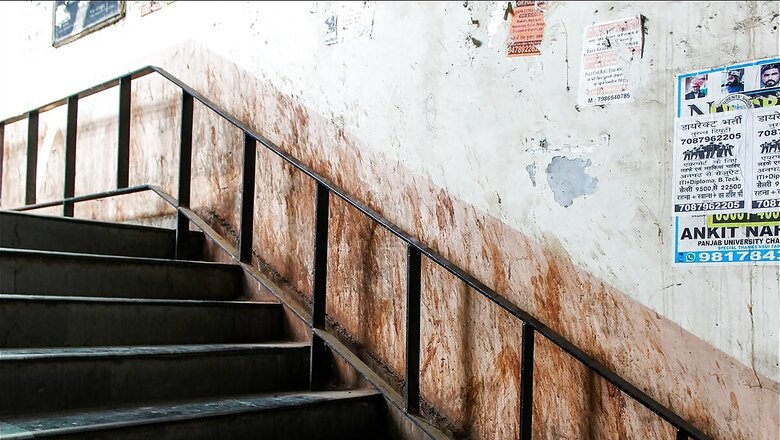
views
In the bustling streets of India, where the confluence of tradition and modernity is a daily spectacle, a persistent menace used to mar the urban landscape. The signs of this menace were the unsightly stains of paan and gutkha, strewn across public spaces. From road dividers to historic monuments, we used to witness these unsightly appearances. This habit for long had been a scourge on the cleanliness and hygiene efforts of the country. However, over the years there has been a change in this behavior largely driven by both government intervention and innovative solutions.
The Indian Railways has borne the brunt of this issue the most. The stains left behind by paan and tobacco users cost the railways a staggering amount of money and a significant amount of water annually. Cleaning these stains requires manpower and harsh chemicals, making it not just a social menace but also an environmental challenge.
Government’s response
The Indian government a few years ago in response issued Standard Operating Procedures (SOPs) for the regular removal of these stains from public places, including railway stations. These SOPs, part of the “swachh office” initiative, emphasized use of water, urinal facilities and vacuum cleaners.
Biodegradable spittoons
Indian Railways is leading the charge for innovative solutions to this problem. Three major railway zones, namely Western, Northern, and Central partnered with a startup called EzySpit and introduced a pocket-sized reusable and biodegradable spittoon. What sets this invention apart is the inclusion of seeds within the spittoon, which sprout into plants when properly disposed of.
To make these biodegradable spittoons readily available, vending machines and kiosks were installed at various railway stations and were offered at an affordable price. These pouches came in various sizes, and can be reused up to 15 to 20 times. They also contain a substance that solidifies spit, making it easy to dispose of responsibly.
“no thu thu”campaign
The “no thu thu” (no spitting) campaign which was first started in 2022 by indore civic bodies, has been an important part of the drive against gutka stains. Shop owners across many cities in the country joined forces, urging gutka addicts to use spit cups.
While the government is doing its part by taking proactive steps, it ultimately falls on the shoulders of the citizens to maintain cleanliness in the cities. We have witnessed many examples highlighting the importance of civic sense and responsibility towards cleaner cities. As the saying goes that you can lead a horse to water, but you can’t make him drink, it is time for India to realize the importance of civic sense and work together to create cleaner cities.




















Comments
0 comment